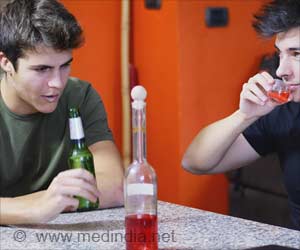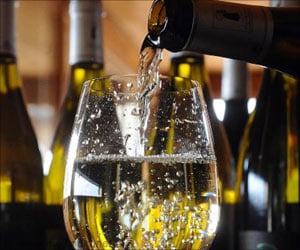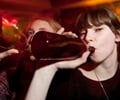
‘Excess consumption of alcohol and energy-dense foods are two of the most significant preventable causes of a range of non-communicable diseases globally, including heart disease and many cancers.
’
Tweet it Now
A team of researchers at the Universities of Cambridge and Bristol, UK conducted two online studies with separate participants, asking them to rate different image-and-text HWLs on alcoholic drinks (5,528 participants) or energy-dense snacks (4,618 participants).Dr. Gareth Hollands, the corresponding author, said: "To our knowledge, these are the first large-scale studies in general populations to examine the potential effectiveness and acceptability of image-and-text health warning labels on alcohol and on snack foods. Prior research in this area has typically either looked at these warning labels on sugary drinks or used smaller or less representative samples."
The authors found that HWLs on alcoholic drinks depicting bowel cancer, followed by those depicting liver cancer was associated with the highest level of negative emotions - such as fear, disgust, discomfort and worry - and the lowest desire to consume the product. They were also considered the least acceptable for use by the study participants. In general, few of the alcohol HWLs were considered acceptable, with only three out of 21 rated at least somewhat acceptable.
HWLs on high-density snacks depicting bowel cancer, followed by those depicting non-specific cancer was associated with the highest level of negative emotions and lowest desire to consume the product, with those depicting bowel cancer considered to be the least acceptable. HWLs on energy-dense snacks were judged on average more acceptable than those on alcohol, with 13 out of 18 snacks HWLs rated as at least somewhat acceptable.
The authors suggest that the response to labels depicting bowel cancer HWLs may indicate those that have the greatest potential for reducing alcohol and snack food selection and consumption.
Advertisement
Participants for the alcohol study were sampled from the UK population if they self-reported consuming either beer or wine at least once a week. A total of 5528 people were shown an image of a bottle of beer or wine labeled with one of 21 possible HWLs illustrating the adverse health consequences of alcohol consumption. Participants were asked how afraid, worried, uncomfortable or disgusted the label made them feel, to rate their desire to consume the product, and how strongly they supported putting the label on alcoholic drinks.
Advertisement
The authors caution that this study could not demonstrate whether negative emotional arousal and impacts on the desire to consume are actually effective in changing behavior. As the studies were conducted online, responses may differ when HWLs are applied to physical products in real-world settings. Further studies are needed to examine the real-world potential of these labels to reduce the selection and consumption of alcohol and energy-dense snacks.
Source-Eurekalert















